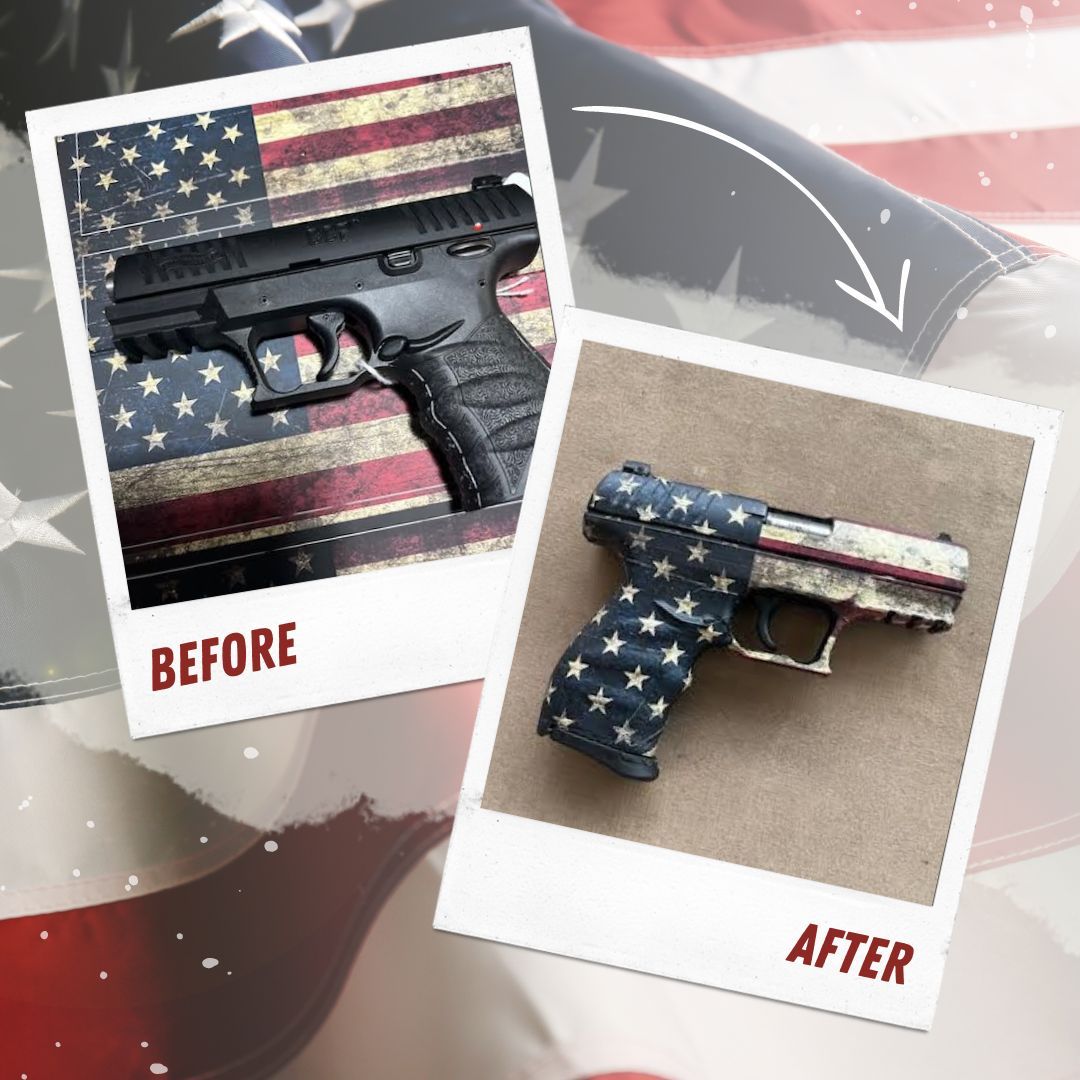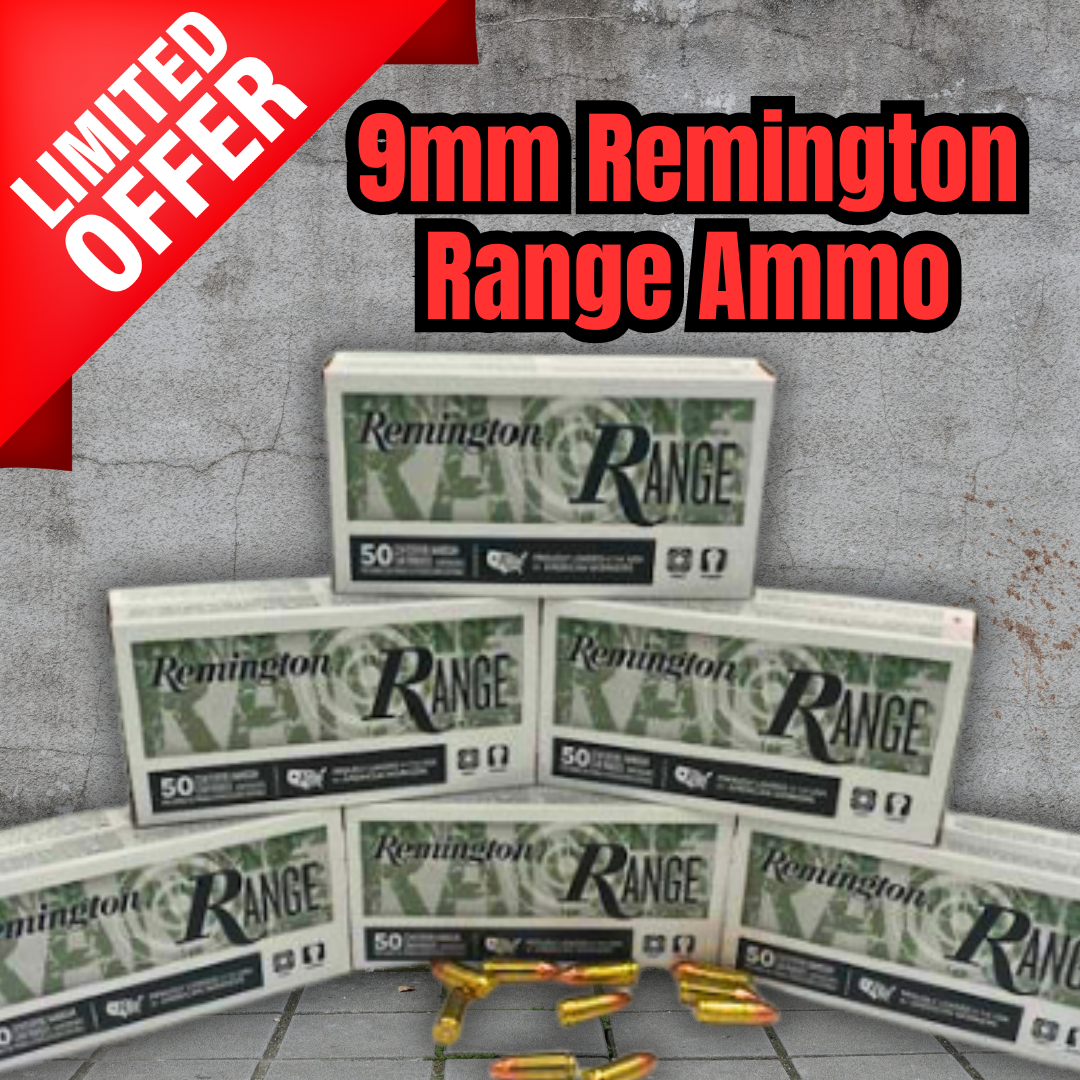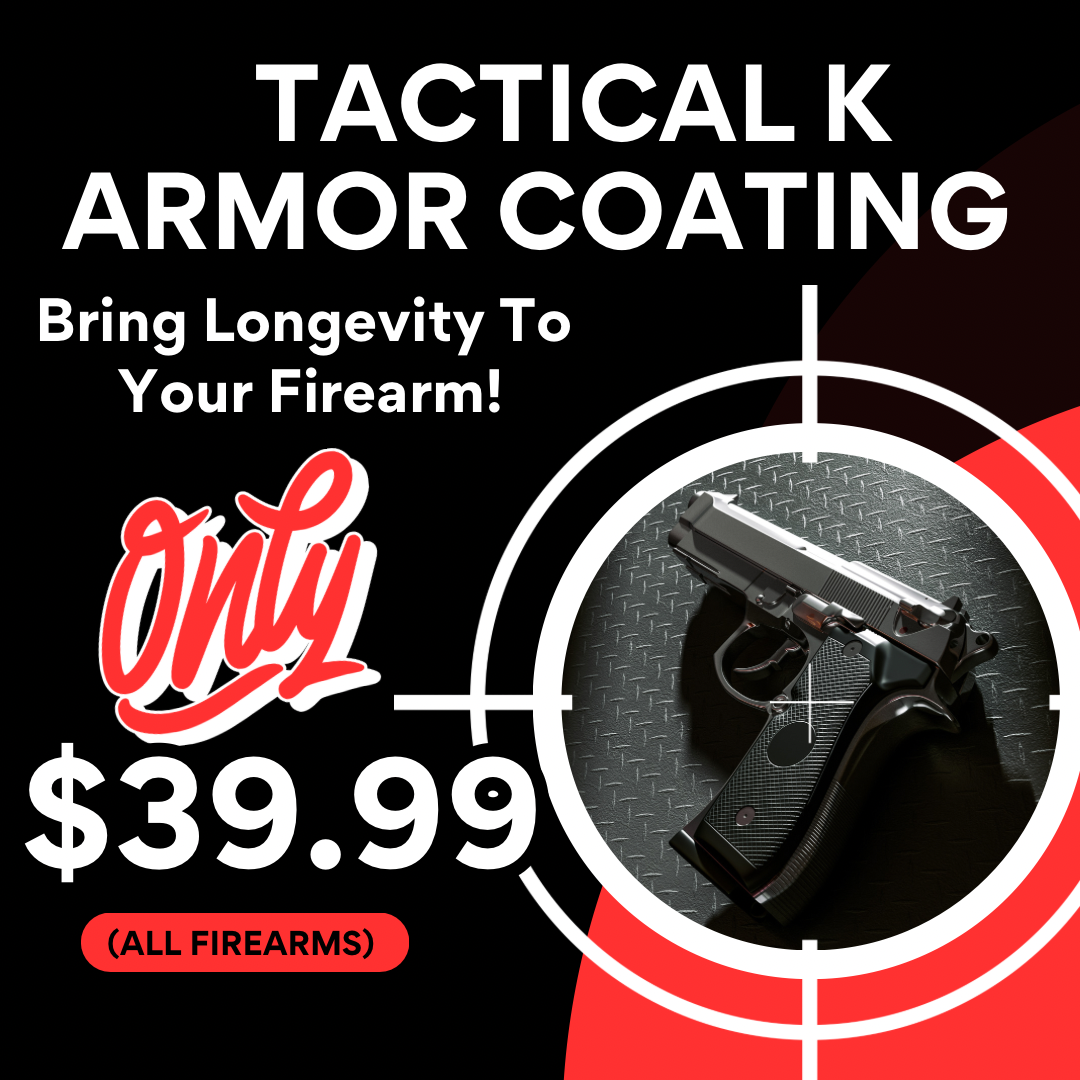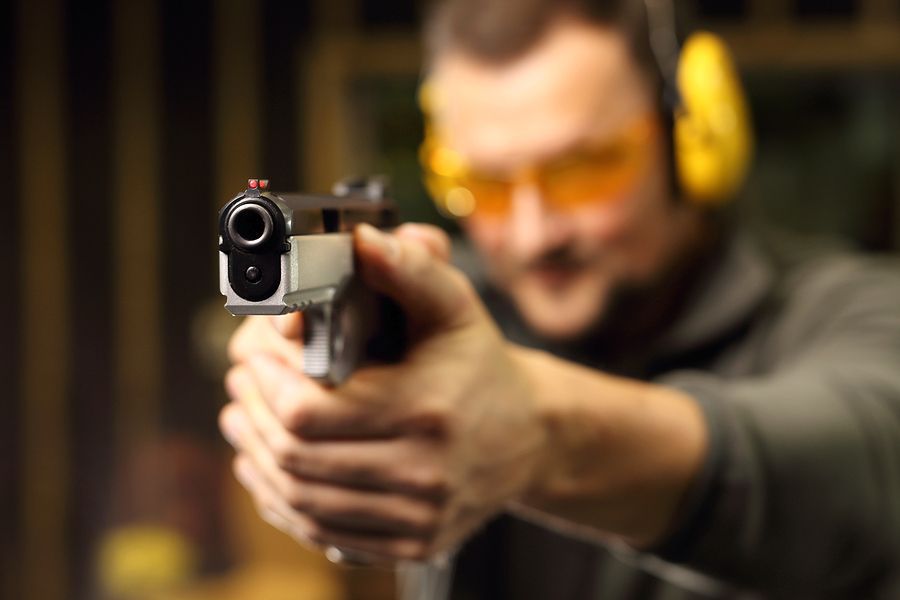DOJ NEWS: Darkweb They'll Find YOU
Gregory Kielma • June 29, 2025
Law Enforcement Seize Record Amounts of Illegal Drugs, Firearms, and Drug Trafficking Proceeds in International Operation Against Darknet Trafficking of Fentanyl and Opioids; 270 Arrested Across Four Continents

Law Enforcement Seize Record Amounts of Illegal Drugs, Firearms, and Drug Trafficking Proceeds in International Operation Against Darknet Trafficking of Fentanyl and Opioids; 270 Arrested Across Four Continents
For Immediate Release
Office of Public Affairs
Today, the Attorney General and the Department of Justice’s Joint Criminal Opioid and Darknet Enforcement (JCODE) team, and international law enforcement partners announced the results of Operation RapTor, including the arrests of 270 dark web vendors, buyers, and administrators in Austria, Brazil, France, Germany, the Netherlands, South Korea, Spain, Switzerland, the United Kingdom, and the United States. Operation RapTor resulted in the highest number of seizures of any JCODE operation, including more than $200 million in currency and digital assets, over two metric tons of drugs, 144 kilograms of fentanyl or fentanyl-laced narcotics, and over 180 firearms.
Operation RapTor was a global, coordinated effort by law enforcement in the United States, Europe, South America, and Asia to disrupt fentanyl and opioid trafficking, as well as the sales of other illicit goods and services, on the darknet, or dark web. Operation RapTor builds on the successes of prior years’ operations and takedowns of marketplaces, which resulted in the seizure of darknet infrastructure from Nemesis, Tor2Door, Bohemia, and Kingdom Markets, providing investigators across the world with investigative leads and evidence. JCODE and Europol’s European Cybercrime Centre (EC3) continue to compile intelligence packages to identify entities of interest. These leads allow U.S. and international law enforcement agencies to identify darknet drug vendors and buyers, resulting in a series of coordinated, but separate, law enforcement investigations, reflected in the statistics announced today. In furtherance of Operation RapTor and in its first action as a JCODE member agency, the Office of Foreign Assets Control (OFAC) additionally sanctioned Iranian national Behrouz Parsarad for his role as the founder and operator of Nemesis Market following seizure of the market. Parsarad was also indicted by a federal grand jury in the Northern District of Ohio on drug trafficking charges related to the illegal business he ran on the dark web.
“This historic international seizure of firearms, deadly drugs, and illegal funds will save lives,” said Attorney General Pam Bondi. “Criminals cannot hide behind computer screens or seek refuge on the dark web – this Justice Department will identify and eliminate threats to the American people regardless of where they originate.”
“By cowardly hiding online, these traffickers have wreaked havoc across our country and directly fueled the fentanyl crisis and gun violence impacting our American communities and neighborhoods. But the ease and accessibility of their crimes ends today,” said FBI Director Kash Patel. “The FBI could not do this work without our partners both at home and abroad, and the staggering success of this year's record-breaking amount of fentanyl, guns, and drugs seized prove that our efforts are working. Anyone looking to anonymously harm our citizens through illicit darknet trafficking: your days of recklessness are numbered.”
“These predators who peddled poison on the dark web might have thought they are untouchable — hiding behind screens, pushing fentanyl, fueling overdoses, and cashing in on misery. However, Operation RapTor just proved them wrong,” said DEA Acting Administrator Robert Murphy. “DEA and our global partners reached across borders, across platforms, and across currencies to rip their networks apart. Let this stand as a warning: no mask, no marketplace, and no digital wallet can hide you from facing justice.”
“Operation RapTor shows that the dark web is not beyond the reach of law enforcement,” said Head of Europol’s European Cybercrime Centre, Edvardas Šileris. “Through close cooperation and intelligence sharing, officers across three continents identified and arrested suspects, sending a clear message to those who think they can hide in the shadows. Europol will continue working with our partners to make the internet safer for everyone."
“This unprecedented operation is a testament to the power of global partnership and the unwavering dedication of our team,” said Chief Guy Ficco of IRS Criminal Investigation (IRS-CI). “Working through the JCODE initiative, IRS Criminal Investigation and our international partners led the largest and most impactful takedown to date—seizing over $200 million in assets, removing deadly drugs and weapons from circulation, and holding more than 270 individuals accountable. This critical strike against dark web networks fueling the fentanyl crisis marks a proud moment in our ongoing effort to protect communities worldwide.”
“This record-breaking operation sends a clear message to every trafficker hiding behind a screen—your anonymity ends where our global reach begins,” said Acting Director Todd Lyons of U.S. Immigration and Customs Enforcement (ICE). “Thanks to the unwavering efforts by ICE’s Homeland Security Investigations (HSI), Europol and our international partners, we’re cracking the code of the so-called ‘safe spaces’ for cybercriminals—they are in our sights and we’re not backing down.”
“Operation RapTor shows what’s possible when the U.S. Postal Inspection Service and our partners around the world stand united,” said Chief Postal Inspector Gary Barksdale of the United States Postal Inspection Service. “No matter where criminals hide, we will find them, dismantle their operations, and bring them to justice. This operation was about protecting innocent people from predatory criminals who profit from violence, addiction, and fear. Our commitment is unwavering.”
“The FDA is committed to continuing its work to disrupt and dismantle the illegal sales of drugs on the dark web, where such sales far too often have tragic consequences,” said Deputy Director Chad Menster of the Food and Drug Administration’s Office of Criminal Investigations (FDA OCI). “We will continue to monitor, investigate and bring to justice those who misuse the internet in a quest for profits with reckless disregard for the risk to public health and safety.”
The impact of Operation RapTor can be attributed to the tireless work of U.S. and international law enforcement partners. For example:
On Dec. 16, 2024, Rui-Siang Lin pleaded guilty to charges brought by the U.S. Attorney’s Office for the Southern District of New York of narcotics conspiracy, money laundering, and conspiracy to sell adulterated and misbranded medication for owning and operating Incognito Market, one of the largest narcotics marketplaces on the internet.
According to court documents and statements made in court, Incognito Market was an online narcotics bazaar that started on the dark web in October 2020. Until it shut down in March 2024, Incognito Market sold more than $100 million of narcotics—including hundreds of kilograms of cocaine and methamphetamine. Incognito Market was available globally to anyone with internet access using the Tor web browser on the “dark web” or “darknet.” Incognito Market was designed to facilitate seamless narcotics transactions, incorporating many features of legitimate e-commerce sites such as branding, advertising, and customer service. Upon visiting the site, users were met by a splash page and graphic interface, which is pictured below:
While concealing their identities with a unique username or “moniker,” users were able to search thousands of listings for narcotics of their choice. Incognito Market sold illegal narcotics including heroin, cocaine, LSD, MDMA, oxycodone, methamphetamine, ketamine, and alprazolam, as well as misbranded prescription medication. An example of listings on Incognito market is below:
Listings included offerings of prescription medication that was falsely advertised as being authentic. For example, in November 2023, while operating in an undercover capacity on Incognito Market, a law enforcement agent purchased and received several tablets purported to be oxycodone. Testing revealed that these tablets were not oxycodone and were, in fact, fentanyl pills.
The FBI, HSI, DEA, FDA OCI, and the New York Police Department investigated the case.
In a second example, in January 2025, the U.S. Attorney’s Office for the Central District of California secured a 17-year sentence for Adan Ruiz, of Orange County, and a 15-year sentence for Omar Navia, of Los Angeles, for supplying fentanyl-laced pills to a drug trafficking ring that sold these drugs to more than 1,000 customers nationwide via the darknet. In imposing the sentences, U.S. District Judge David O. Carter called this case “the most sophisticated fentanyl distribution ring that this court has seen.”
Navia and Ruiz admitted in their plea agreements that, from at least August 2021 to December 2022, they supplied fentanyl-laced pills to Michael Ta, 26, of Westminster, and Rajiv Srinivasan, 38, of Houston, who used the darknet and encrypted messaging applications to sell more than 120,000 fentanyl-laced pills, 20 pounds of methamphetamine, and other drugs directly to more than 1,000 customers in all 50 states, causing several fatal overdoses.
According to court documents and statements made in court, Srinivasan and Ta used the “redlightlabs” darknet account to advertise and sell counterfeit M30 oxycodone pills containing fentanyl and other illicit drugs. Srinivasan also used the encrypted messaging application Wickr to communicate with and sell drugs to customers. Srinivasan received virtual currency as payment for the drugs and then routed that virtual currency through cryptocurrency exchanges.
The court record also shows that Ta communicated with Srinivasan about drug orders, obtained fentanyl-laced pills and methamphetamine from sources of supply, stored those drugs in his residence, and mailed out packages with drugs to customers who had ordered them from Srinivasan on the “redlightlabs” account.
Ta and Srinivasan admitted in their plea agreements to causing the fentanyl overdose deaths of three victims. Both defendants further admitted to distributing fentanyl-laced pills to two additional victims, both of whom suffered fatal drug overdoses shortly after they received the pills from Ta and Srinivasan. Prosecutors wrote in a sentencing memorandum, “The five victims of defendants’ crimes ranged in age from 19 to 51. They lived across the country, from California to Florida, Colorado to Arkansas. Each of the five victims leaves behind a family that has been forever and fundamentally changed by defendants’ actions. [Ta and Srinivasan] also victimized countless others as part of an epidemic of addiction and despair plaguing our district and our country.”
The FBI investigated this case, with substantial assistance from the U.S. Postal Inspection Service (USPIS), the DEA’s Fayetteville Resident Office, and the Northern Colorado Drug Task Force.
In a third example, in February 2024, the U.S. Attorney’s Office for the Eastern District of Virginia charged Joshua Vasquez, Joseph Vasquez, and Rafael Roman by criminal complaint with conspiracy to distribute 500 grams or more of methamphetamine. Joshua Vasquez, Joseph Vasquez, and Roman conspired to sell counterfeit Adderall containing methamphetamine on darknet markets such as Bohemia and Tor2Door. The defendants allegedly sold drugs on darknet marketplaces in exchange for cryptocurrency under the monikers “NuveoDelux,” “Mrjohnson,” and “AllStateRx.”
According to court documents and statements made in court, these three prolific darknet vendors were collectively responsible for fulfilling over 13,000 drug orders shipped throughout the United States, ranging in size from user quantities, e.g., 5 pills, to “reseller” quantities, e.g., 10,000 pills. Joshua and Joseph Vasquez collectively ran the NuveoDeluxe and AllStateRx accounts. A fourth co-conspirator, Gregory Castillo-Rosario, who was arrested in October 2024, ran the Mrjohnson account. Roman assisted his co-conspirators by pressing counterfeit Adderall pills, packaging them, and distributing drug orders into the mail using the U.S. Postal Service. The conspiracy also laundered funds associated with darknet drug proceeds.
While executing search warrants in New Jersey and New York, federal law enforcement officers seized more than $330,000, close to 80,000 counterfeit Adderall pills, one firearm, and two industrial pill press machines. Additionally, two vehicles and several pieces of property were seized during the search warrants. An additional 30 kilograms of suspected counterfeit Adderall pills were seized on May 2, 2024, in New York. Photographs of some of the seized items are below:
Joshua Vasquez pleaded guilty on April 24, 2024, and was sentenced on July 25, 2024, to 12 years in prison. Joseph Vasquez pleaded guilty on April 15, 2024, and was sentenced on Aug. 8, 2024, to 10 years in prison. Roman pleaded guilty on May 30, 2024, and was sentenced on Nov. 14, 2024, to 10 years in prison. They all pleaded guilty to conspiracy to create a counterfeit substance and distribute 500 grams or more of a mixture and substance containing methamphetamine.
The FBI, FDA, and USPIS investigated this matter with significant contributions from DEA, HSI, the Ocean County Sheriff’s Office, the Howell Township Police Department, the Lakewood Township Police Department, the Orlando Police Department, the Orange County Sheriff’s Office, the Arlington County Police Department, and the New York Police Department.
In a fourth example, a San Fernando Valley man, Brian McDonald, 23, was sentenced to more than 20 years in federal prison in the Central District of California for using darknet marketplaces to sell hundreds of thousands of dollars’ worth of fentanyl-laced pills and cocaine to buyers nationwide. He admitted in court documents to causing one fatal fentanyl overdose.
From at least April 2021 until May 2023, McDonald and others conspired to sell fentanyl and cocaine via multiple darknet marketplaces. McDonald operated under the monikers “Malachai Johnson,” “SouthSideOxy,” and “JefeDeMichoacan.” McDonald created, monitored, and maintained the darknet vendor profiles, including by updating drug listings and shipment options, tracking drug orders, and offloading Monero cryptocurrency received as drug deal payments into cryptocurrency wallets that McDonald controlled.
McDonald recruited and hired accomplices to help package and ship the narcotics they sold on the darknet. McDonald directed and helped these accomplices package and ship the narcotics. McDonald purchased bulk quantities of fentanyl and cocaine and then directed others to complete hundreds of drug sales involving large quantities of both fentanyl and cocaine.
The FBI and DEA investigated this matter.
Operation RapTor involves law enforcement actions taken by JCODE member agencies, including the DEA, FBI, FDA OCI, HSI, IRS-CI, and USPIS. Credible reporting from the referenced agencies, in addition to contributions from the Bureau of Alcohol, Tobacco, Firearms and Explosives (ATF), Army Criminal Investigation Division, Customs and Border Protection, the Treasury Department’s Financial Crimes Enforcement Network (FinCEN) and OFAC, and Naval Criminal Investigative Service, enabled domestic law enforcement actions in support of Operation RapTor. State, local, and other federal agencies also contributed to Operation RapTor investigations through task force participation and regional partnerships, as well as the multi-agency Special Operations Division.
The investigations leading to Operation RapTor were significantly aided by support and coordination from the Criminal Division’s Narcotic and Dangerous Drug Section and Computer Crime and Intellectual Property Section, with valuable assistance from the Criminal Division’s Money Laundering and Asset Recovery Section, Fraud Section, and Office of International Affairs.
Key international partners include Europol; Eurojust; Austria’s Criminal Intelligence Service with various Provincial Criminal Police Departments (Bundeskriminalamt und Landeskriminalämter); Brazil’s Civil Police of the State of Pará (Polícia Civil do Estado do Pará) and Civil Police of the State of São Paulo (Polícia Civil do Estado do São Paulo); France’s French Customs (Douane), National Gendarmerie (Gendarmerie Nationale); Germany’s Federal Criminal Police Office (Bundeskriminalamt), Prosecutor’s Office in Cologne – Central Cybercrime Contact Point (Staatsanwaltschaft Köln, Zentral- und Ansprechstelle Cybercrime), Central Criminal Investigation in Oldenburg (Zentrale Kriminalinspektion Oldenburg) various police departments (Dienststellen der Länderpolizeien), and German Customs Investigation (Zollfahndungsämter); the Netherlands’ Team High Tech Crime (National Investigations and Special Operations (NIS) and Post Interventie Team (PIT), National Intelligence, Expertise and Operational Support (NIEO); Spain’s National Police (Policía Nacional); South Korea’s Seoul Central District Prosecutors’ Office – Darknet Investigations Unit; Switzerland’s Zurich Cantonal Police (Kantonspolizei Zürich) and Public Prosecutor’s Office II of the Canton of Zurich (Staatsanwaltschaft II); and the United Kingdom’s National Crime Agency (NCA), National Police Chiefs’ Council (NPCC).
Federal investigations spanned the United States, and 26 United States Attorneys’ Offices are prosecuting cases, including the Central District of California, the Northern District of California, the Southern District of California, the District of Colorado, the District of Connecticut, the District of Columbia, the Middle District of Florida, the Southern District of Florida, the Middle District of Georgia, the District of Hawaii, the Northern District of Illinois, the Southern District of Indiana, the Eastern District of Kentucky, the District of Massachusetts, the Eastern District of Michigan, the Western District of Michigan, the Eastern District of Missouri, the District of New Jersey, the Southern District of New York, the District of North Dakota, the Northern District of Ohio, the Southern District of Ohio, the Northern District of Oklahoma, the Eastern District of Pennsylvania, the Eastern District of Virginia, and the Western District of Washington.
The Justice Department established the FBI-led JCODE team to lead and coordinate government efforts to detect, disrupt, and dismantle major criminal enterprises reliant on the darknet for trafficking opioids and other illicit narcotics, along with identifying and dismantling their supply chains.
An indictment is merely an allegation. All defendants are presumed innocent until proven guilty beyond a reasonable doubt in a court of law.
Updated June 23, 2025

Governor Ron DeSantis Florida Judges Strike Down Key Gun Restrictions While Lawmakers Face Pressure to Act Scott Witner Two recent court decisions in Florida have declared parts of the state’s gun laws unconstitutional, shaking up the legal landscape in one of the nation’s most firearm-friendly states and prompting calls for lawmakers to act. Despite Florida’s reputation as a pro-gun state, its Republican-controlled Legislature passed several restrictive measures after the 2018 shooting at Marjory Stoneman Douglas High School in Parkland. Those included raising the minimum age to buy a firearm to 21 and maintaining a ban on open carry. Now, both of those laws are under fire, and the courts appear to be siding with the Constitution. Broward County Judge Strikes Down Age Restriction In Broward County, Circuit Judge Frank Ledee ruled that Florida’s ban on concealed carrying for adults under 21 is unconstitutional. The ruling came after he overturned the conviction of 19-year-old Joel Walkes, who had been charged with a third-degree felony for carrying a concealed handgun. Under current law, 18- to 20-year-olds can legally own a firearm if it’s gifted or inherited, but they cannot purchase one or carry it concealed. Judge Ledee found that the restriction fails the “historical tradition” test established by the U.S. Supreme Court in NYSRPA v. Bruen, which requires gun laws to align with the nation’s historical understanding of the Second Amendment. Ledee also referenced a recent appellate decision striking down Florida’s open carry ban, noting that the state’s firearm laws have become inconsistent. “Distilling these inconsistencies into a framework of firearm regulations compatible with the guarantee to bear arms…is best left to the wisdom of legislative debate,” Ledee wrote. Open Carry Ruling Adds Fuel to the Fire Florida’s First District Court of Appeal addressed the open carry issue in September in a case involving a man arrested in downtown Pensacola on July 4, 2022, for openly carrying a holstered handgun along with a copy of the U.S. Constitution. The court ruled that Florida’s blanket prohibition on open carry cannot stand under the Second Amendment, effectively restoring the right to carry a firearm openly. Existing limitations still apply, including bans on carrying in a threatening manner or in prohibited areas such as schools, bars, or government meetings.

What You Should Never Do or You Need Think About As A Legal Gun Owner Gregg Kielma looks at what to and not to do when carrying a firearm. Please, friends, as legal firearm owners, we need to think about using a firearm in self-defense. We need to be the "Responsible Person" Let’s take a look at the 12 thoughts about owning and brandishing a firearm. Americans love guns. They love to point them at a target and squeeze off a few rounds, whether to eliminate stress or just to see what happens when a bullet traveling at high velocity shreds a Budweiser can. Indeed, the numbers prove it – there are 393 million firearms owned by civilians in the U.S., a number that’s higher than the number of people in the U.S. As much as Americans love guns, they can sometimes be a bit forgetful when it comes to the rules. That’s a sorry situation because those rules are there to ensure that everyone goes home safe and sound after a day at the range. Here’s our list of rules, guidelines, and advice for what you should never do as a gun owner. 1. Don’t Carry Without a Permit… EVER! This may seem obvious, but many rules seem obvious, and people flout them anyway. So we’re going to start off with a no-brainer that we implore you to take seriously – if your state requires a permit for carrying concealed or open, take that permit with you if you’re going to do some shooting. Think of it the same way you will always carry your license if you want to drive. 2. Never Point a Gun at Something You Don’t Mean to Shoot Again, this may seem obvious, but the headlines are full of tragic stories of people who inadvertently ended someone else’s life because they were absent-mindedly pointing a gun in some random direction. If you don’t want to turn up on the six o’clock news or be found guilty of criminal negligence, don’t point your gun at anything you don’t plan on shooting. 3. Get the Background Check Background checks vary from state to state, with some requiring longer waiting periods than others in order to make sure someone buying a gun doesn’t have a long history of violent crime. While you may have never committed a crime in your life, you still don’t want to dispense with background check, which is part of making sure that every aspect of your gun ownership is done by the book and to the letter. 4. Never Leave Your Gun Unsecured…EVER! This should really go without saying, but apparently, a lot of people never got the memo, so please pay attention to the following statement – never leave your gun unsecured. Store it in a safe, a locked cabinet, any other place with a mechanism that prevents access without a key. This is especially important for anyone with children, particularly small children who like to get into every cabinet and drawer in the house and ask, “What does this do?” 5. Educate Your Household If you’ve bought a gun, or several guns, it’s important that you sit down with your entire household and explicitly discuss the safety protocols with everyone until it’s clear to you that you’ve been understood. Even if you have someone in your household who is 100% against guns and never intends to touch one, make sure you educate them as well. You never know. 6 . Never Use Alcohol or Drugs While Handling Guns…EVER! Maybe the easiest way to demonstrate this rule is by comparing it to driving. If you wouldn’t steer a two-ton metal object down the highway at 95 miles per hour after a few drinks, then you should likewise not start playing with a gun under those circumstances either. You’re not okay to shoot, any more than an inebriated motorist is okay to drive. 7. Don’t Brandish Your Weapon to Intimidate…EVER! First, there are laws against waving a gun around to threaten somebody, even if you have no intention of firing it. Guns can discharge accidentally if mishandled, potentially resulting in lengthy prison sentences. So please, only make gestures with your index finger. 8. Never Assume a Gun is Unloaded…It’s ALWAYS LOADED! This is one of the first things that’s taught in gun safety courses – never assume that a gun is unloaded. In fact, perhaps it’s safer yet to assume it’s loaded unless you see some kind of ironclad evidence to the contrary. Treat every gun like a loaded gun until you’ve personally checked it and made sure it’s not a danger to anyone, including yourself. 9. Don’t Shoot Without Knowing What’s Behind Your Target…DON’T HURT ANYONE BEYOND THE INTENDED TARGET! If you’re shooting at something, it’s important to remember that you’re not just shooting at a target. You’re also shooting at what’s behind that target. Bullets can go through walls, windows, and many other things that your target may be in front of, so be aware of what lurks behind whatever it is that you’re pumping full of hot lead. 10. Control Your Emotions…Deescalate… Just as you shouldn’t drive angry, you shouldn’t shoot while you’re angry. It’s also not such a hot idea to shoot when you’re consumed with despair. Basically, if you’re going to handle a gun, make sure your mind is clear and your emotions are cool. The prisons are full of people who got momentarily upset and made a choice in the heat of the moment that can never be undone. 11. Don’t Dismiss the Importance of Mental Health. Sometimes, when a horrifying story about a shooter makes the headlines, the shooter has been in the throes of an untreated mental illness that makes it hard for them to tell right from wrong. If you’re a gun owner and you feel like you may be struggling with such common mental health issues as depression or anxiety, seek out medical help sooner rather than later, so it doesn’t turn from a treatable mental illness into something much worse. 12. Never Use a Gun to Solve Personal Problems. The headlines are full of stories about people losing their lives to gun violence. Sometimes, it was all over a property dispute, a noise complaint, or some other small-time nuisance that could have been resolved without violence, and the aftermath can be devastating. Firearms advocates are clear in their belief that guns should be used for protection and defense only, not for resolving personal disputes.
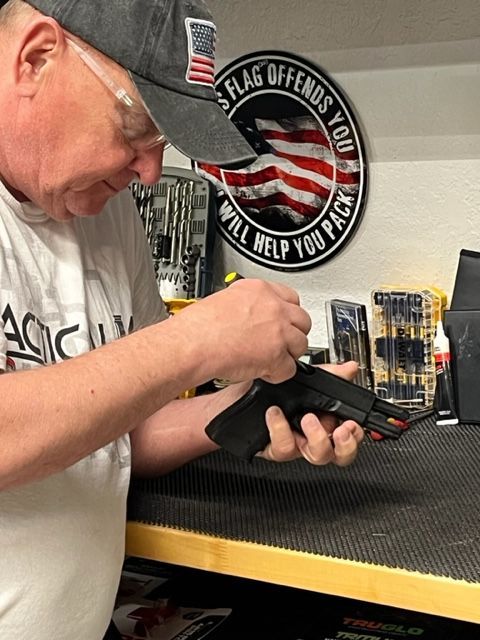
Gregg Kielma says"Glock My Choice" Has Been for 40 Plus Years Is it worth spending extra on a Glock or similar firearm, or is a Hi-Point or similar firearm sufficient for most basic needs? What About Training? Gregg Kielma USCCA Instructor-FFL-Gunsmith There are several topics to discuss here. Let's Take A LOOK. First: If you are new to firearms, you want a pistol that works for you, is reliable, and can fit your budget. But remember that cheap is not necessarily good; it can be, but it’s not generally the way to go; what matters is that it fits you, and you are effective with it. I can’t emphasize that enough. I always tell new firearm owners that they must try different pistols to find the one that works best for them. THE best-feeling pistol I’ve ever held in my hands was a Glock 19. It felt as if it had been purpose-designed to fit my own hands. It felt…wonderful. I have owned my Glock 19 35 years, 40K rounds through it and never had a single issue. I’m a Glock firearms proponent in every sense of the word. It will always be firearm of choice. As a gunsmith, this is my choice. For you? I have no idea. I know competitive shooters who do quite well with Glocks; they like them a lot. The point is that you can’t know, just by the brand name. Yes, Glocks have a great reputation. This is what I recommend to my students and clients. Second, a High-Point is an inexpensive gun. You may be able to tweak it to be able to run reliably, but to do that, you need to know something about pistols. You don’t, so I would, hands-down, urge you not to buy one. Presumably you want this for personal protection and defense; you do not want to put that reliance on a cheap, possibly ineffective firearm. Quality matters here. I’ve owned a High-Point 9mm pistol. I’d read about how it could be made to run reliably (primarily by tweaking the magazine feed lips and polishing the feed ramp), and that sounded like something I’d like to try. So I bought one and proceeded to play with it and tweak it. It ran reliably, for the most part, once I modified it. It was an ugly gun, designed to be cheap, and it was. But all it took was one of these and that was it for me. What am I talking about? A jam. I used all different ammunition manufacturers and my own loads I made which are in my opinion perfect. The round didn’t feed into the chamber (the open space just to the right of the bullet), it jammed left of the barrel and chamber no matter what I used. Not something you want when in a difficult spot. For whatever reason, the High Point didn’t like that bullet profile. It was an absolute bear to get that jam cleared. and that was it for me. The gun would load and shoot standard FMJ (full metal jacket) bullets quite well, but not my own TCB handloads. It's now sitting in my collection of firearms I'll never use again. Third, you want a firearm that fits you, with which you are accurate, and which uses ammunition cheap enough that you’ll practice with it. A 9mm pistol fits this bill best, IMO. A lot of new shooters will gravitate toward .380 pistols, but it is not only a less-capable round, but its ammunition is also expensive compared to the 9mm offerings. That means you will likely shoot less because it costs more. Shooting is a perishable skill that you need to refresh on a regular basis. Fourth, you really, really want to get some training. Me, Gregg Kielma from Tactical K Training and Firearms can teach you about shooting, so you learn good habits from the start. A good teacher will instruct you in grip, sight picture, stance, and trigger control. As an FFL and range owner I can also help you find the best pistol for you. I have several models you can test for fit and ease of use. This is crucial; if you don’t know much about firearms, please get some training with Gregg. Yes, it’s going to cost, but if you can’t use a firearm effectively, what’s the point in buying one? Fifth, while Glock is an excellent name, its fame is tied to being one of the very first effective polymer-framed handguns. Many manufacturers now make excellent pistols. You know what my first choice is, Glock. Don’t limit yourself to thinking about the cheapest (High Point). Get a reliable firearm you know will not jam when you need it most. Have fun figuring out what is the best gun for you, enjoy the process. We have over 150 firearms for sale get one that’s right for you! Good luck, and please call me to get the training you need. Stay Safe! Gregg Kielma Tactical K Training and Firearms

If I'm legal to carry a gun but conceal it without a license, can I really get in trouble? Gregg Kielma USCCA Firearms Instructor Says Gregg Kielma FFL, Firearms Instructor, Gunsmith, and ERT Captain. I get asked this question a lot. "Do yourself a favor and spend the money to take the class and get the permit. Knowledge is power and ignorance of the law is not an excuse. Invest in yourself, know the laws and understand how a firearm is used. Please take my class for the most up to date information available. Yes, if you get caught carrying a concealed weapon without a permit in a state that requires permits, that is a crime, and you can go to jail for it. Many states allow permitless open carry but require a permit for concealed carry in most circumstances. My home state of Virginia is one of them. In Virginia, carrying a concealed weapon without a permit is a class 1 misdemeanor, good for up to 1 year in jail and a $2500 fine for the first offense. Subsequent offences can be charged as a class 6 felony. Many states recognize Constitutional carry, i.e. concealed carry without a permit. The states that recognize Constitutional Carry are Alabama, Alaska, Arizona, Arkansas, Florida, Georgia, Idaho, Indiana, Iowa, Kansas, Kentucky, Louisiana, Maine, Mississippi, Missouri, Montana, Nebraska, New Hampshire, North Dakota, Ohio, Oklahoma, South Carolina, South Dakota, Tennessee, Texas, Utah, Vermont, West Virginia, and Wyoming. Even if you live in a Constitutional Carry state, it is still in your benefit to get a carry permit, because that gives you reciprocal carry rights in other states that recognize your permit. EG a Vermont resident visiting Virginia would need either a Vermont resident permit or a Virginia non-resident permit to carry a concealed handgun in Virginia. Even in your home state, a valid carry permit creates an additional layer of trust and legal protection when dealing with law enforcement.
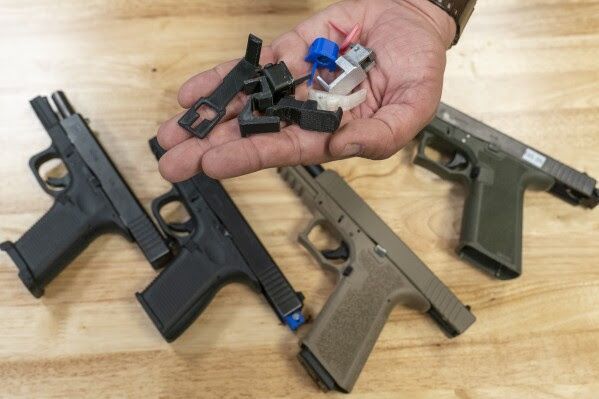
Akron Man Gets 10 Years for Illegal “Glock Switch” Firearm – Part of a Growing National Trend Scott Witner An Akron, Ohio man has been sentenced to ten years in prison after being convicted of possessing an illegally modified Glock pistol equipped with a “switch,” a small device that converts a handgun from semi-automatic to fully automatic fire. Summit County Prosecutor Elliot Kolkovich announced that 33-year-old Maurice Arnold received the sentence following his conviction on weapons and drug charges. Investigators said one of the Glock pistols found in his home was fitted with an illegal switch, a device about the size of a quarter that allows a pistol to fire continuously with a single pull of the trigger. The Bureau of Alcohol, Tobacco, Firearms and Explosives (ATF) classify these devices as machine guns under federal law. Possession is illegal under both federal and Ohio statutes. According to a 2025 ATF report, law enforcement recoveries of Glock switches have increased 784 percent since 2019, with more than 5,800 seized nationwide in 2023. Arnold’s case began when his parole officer, who was supervising him for a 2012 felonious assault conviction, noticed social media posts showing him handling firearms. After multiple parole violations, police obtained a warrant for his arrest and searched his Akron residence, where they recovered three firearms, including one Glock equipped with the switch, and about 300 grams of marijuana. Arnold was initially released on bond but later removed his GPS ankle monitor and attempted to flee. He was eventually captured and convicted in September on the following charges: • Having weapons while under disability (two forfeiture specifications) • Unlawful possession of dangerous ordnance with a six-year firearm specification • Trafficking in marijuana “Glock switches endanger everyone in our streets, and there is no need for anyone to own one,” said Prosecutor Kolkovich. “Removing these tools of mass violence from the streets and holding those who possess them accountable is one of my key enforcement priorities.” A Local Case Reflecting a National Trend Arnold’s case is part of a growing national issue surrounding Glock switches and the federal government’s efforts to control them. As previously reported in Glock Discontinues Dozens of Pistol Models Amid ‘Switch’ Controversy and Market Shift, Glock has taken significant steps to refocus its product line amid increasing scrutiny from lawmakers and the media.

SAF, Other Groups File Brief With Supreme Court In Marijuana User Gun Ban Challenge Mark Chesnut The Second Amendment Foundation (SAF), along with a handful of partner organizations, have filed an amicus brief with the Supreme Court of the United States (SCOTUS) urging the court to grant certiorari in a case challenging the federal ban on firearm possession by individuals who use marijuana. The case, Harris v. United States, revolves around whether the law restricting marijuana users for purchasing or possession guns violates the Second Amendment-protected rights of those pot users. And plaintiffs are challenging the 3rd Circuit Court of Appeals ruling from earlier this year. “Because of the prohibition found in 18 U.S.C. § 922(g)(3), if Americans choose to use marijuana or other cannabis products (that often are legal in their state), they must surrender their Second Amendment right before they do so—and not only when they are intoxicated,” the amicus brief stated. “They may not even own firearms if they regularly consume cannabis products. This does not square with the lengthy historical tradition of how alcohol and firearms have been regulated.” Kostas Moros, SAF director of legal research and education, said the 3rd Circuit got it wrong in its earlier ruling. “The Third Circuit’s ruling defies Bruen and Rahimi by upholding a lifetime disarmament of sober citizens who occasionally use a substance—marijuana—that is now legal to various extents in 40 states and socially accepted by a supermajority of Americans,” Moros said in a news release announcing the filing. “History shows that Founding-era laws addressed the danger of mixing alcohol and firearms by temporarily disarming the actively intoxicated, never by stripping gun rights from anyone who simply drank in moderation. The Third Circuit ignored this close historical analogue and instead relied on remote comparisons to laws disarming the ‘furiously mad.’ We urge the Court to intervene and restore the proper Bruen framework.”
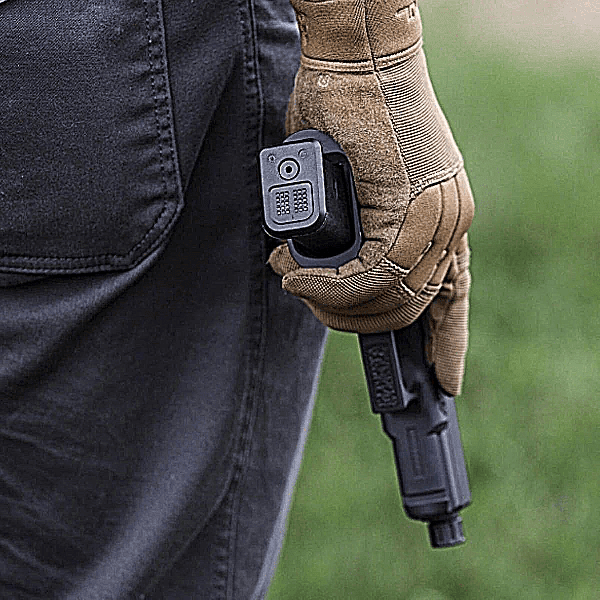
Everytown Targets Ruger After Glock’s Redesign, Demands RXM Pistol Be Pulled Scott Witner Everytown for Gun Safety has now set its sights on Sturm, Ruger & Co. , calling on the American gunmaker to stop producing its new RXM pistol , just weeks after Glock announced plans to discontinue several of its most popular handguns amid ongoing lawsuits and legislative pressure from anti-gun activists. In a letter sent on Monday, Everytown’s chief litigation counsel, Eric Tirschwell, told Ruger that the company should “put public safety first” by either removing the RXM pistol from the market or redesigning its internal trigger system. The group claims the RXM shares a trigger mechanism like Glock’s so-called “cruciform” design; a part that Everytown argues makes both brands’ pistols vulnerable to illegal modification with so-called switches or auto sears. “Ruger faces a choice following Glock’s recent announcement,” Tirschwell wrote. “Will it continue to sell the RXM despite the evidence of its ease of convertibility to an illegal machine gun, or will it put public safety first?” The letter comes on the heels of Everytown claiming credit for Glock’s production changes, describing them as a “major victory” for gun control efforts. The group says it intends to apply similar pressure to Ruger, one of the nation’s largest firearms manufacturers, if the company doesn’t comply with its demands. Ruger has not publicly responded to the letter. Background: The “Switch” Controversy The issue centers around illegal conversion devices, commonly called “Glock switches”, that can turn a semi-automatic pistol into a fully automatic weapon. These small parts, often imported illegally or manufactured with 3D printers, have been appearing in criminal cases across the country. Everytown and other gun control groups argue that because these devices interact with the cruciform trigger bar used in many Glock-pattern pistols, the design itself is “defective” and should be banned or redesigned. The Bureau of Alcohol, Tobacco, Firearms and Explosives (ATF) has documented an increase in recoveries of conversion devices nationwide. However, critics note that illegal conversion devices exist for nearly every major firearm platform, including AR-15 rifles, and that Glock’s popularity simply makes it a more common target for modification and enforcement. More importantly, the possession or installation of these devices is already a serious federal crime punishable by up to 10 years in prison.

California Governor Gavin Newsom Newsom’s New Glock Law Sparks Legal Battle Story by John Baker Newsom’s New Glock Law Sparks Legal Battle California Gov. Gavin Newsom, joined by Assemblymembers Jesse Gabriel and Catherine Stefani, has enacted a law banning sales of certain Glock-style handguns, with exemptions for law enforcement and existing dealer inventory. Gun rights groups have criticized the measure for its restrictive nature, indicating plans to challenge the law in court. Gabriel said the law aims to push manufacturers to redesign cruciform trigger-bar systems that can be converted for automatic fire. Stefani stated, “AB 1127 says enough is enough. If these companies won’t redesign their weapons to protect our communities, California will hold them accountable.” The Firearms Policy Coalition said, “But no tyrant, no politician, and no state will ever be allowed to extinguish the rights of a free people. Not now. Not ever.” The Firearms Policy Coalition added, “FPC and our legal team have been preparing a challenge to AB 1127 for months. We and our allies will move swiftly to strike down this unlawful and immoral ban in federal court. The Constitution – not Gavin Newsom – defines the limits of government power, and we will make sure he once more learns that lesson.” John Baker covers U.S. politics & news for content partner Modern Newsstand LLC.

Why the Glock 19X still outclasses its clones Gregg Kielma You hear a lot of noise these days about clones “doing the same thing for less.” But once you’ve carried a Glock 19X for a while, you learn quick that the folks saying that usually haven’t run one hard. The 19X didn’t build its reputation online. It earned it through field time, rough weather, and thousands of rounds without throwing fits. That matters more than any spec sheet ever will. And if you’ve ever put a cheaper copy next to it on the bench, you already know the truth—similar isn’t the same. Not when your life hangs on whether the gun cycles when your hands are cold and the ammo isn’t perfect. It actually survived the military trials The 19X is the civilian version of Glock’s MHS submission, and that history isn’t marketing fluff. It went through brutal temperature swings, mud immersion, drop tests, and endurance cycles meant to break lesser designs. It didn’t take home the contract, but it didn’t fail the test either—it held its own in a field of serious competitors. You’re buying that same DNA today. A lot of clones copy the silhouette, but none of them went through Army-level abuse before hitting the shelves. There’s something to be said for a pistol proven under conditions where excuses don’t matter. The mixed-length setup actually works There’s no magic number when it comes to how many rounds you should carry. Some folks feel good with six. Others won’t leave the house with less than fifteen. It’s easy to get caught up in numbers, but it really depends on your comfort level, your risk tolerance, and how you’re carrying. Here are ten things to think about before settling on your own answer.© Provided by: The Avid Outdoorsman Glock didn’t invent the long-grip/short-slide configuration, but they nailed the execution. The 19-length slide stays quick out of the holster and tucks under clothing easier. The 17-length grip gives you full control, even if you’ve got paws that swallow most compacts. Clones try to replicate this combo all the time, but most of them get the balance wrong. You end up with sluggish cycling, awkward grip angles, or a frame that doesn’t settle right during recoil. The 19X feels natural from the first draw because the proportions weren’t guessed—they were tested. The trigger is boring in all the right ways Nobody writes poetry about Glock triggers, but you know exactly what you’re getting. On the 19X, that translates into a clean break, a predictable wall, and a short reset you can ride all day without thinking about it. It’s not trying to be flashy. It’s trying to be consistent. Clones often bolt on flat-faced triggers or lightweight connectors to seem “upgraded.” What you really get is inconsistency—different pulls as the parts wear, sloppy resets, or gritty travel that shows up once you hit higher round counts. The 19X gives you something you can trust under stress. The reliability isn’t theoretical It’s easy to get carried away with add-ons, especially when there are shelves full of gear promising to improve your shooting. The truth is, some accessories actually make things worse. They can mess with your grip, add too much weight, or just make your firearm harder to run. Sometimes simple really is better. Before you load up your gun with extra gadgets, it’s worth knowing which upgrades are more trouble than they’re worth. Here are eight accessories that can actually hurt your performance.© ARTFULLY PHOTOGRAPHER / Shutterstock.com Glock’s parts ecosystem is huge for a reason. Extractors, springs, trigger bars—everything is standardized, field-tested, and readily available. If something wears out, you can replace it in minutes, not weeks. And if the pistol ever needs real work, Glock’s support actually knows the platform inside and out. The mags run cleaner and smoother The 19X takes Glock 17 magazines, 19 magazines, the 24 rounders, and even the goofy 33 round sticks if you want to dump ammo for fun. They all fit, they all feed, and they all drop free. The aftermarket selection is massive, and most of it works. With clones, even small deviations in magwell dimensions cause feeding issues. Some mags hang up. Some don’t drop. Some only work half the time. That might be fine at the bench, but it’s a different story when you’re carrying the gun daily. The nPVD finish survives real carry abuse Some guns look great on paper—tons of power, long sight radius, big capacity—but once you try to carry them, it’s a whole different story. If it feels like strapping a brick to your hip or stuffing a lunchbox in your waistband, it’s probably too big. There’s a fine line between power and practicality, especially when you plan to carry a gun every single day. Whether you’re new to concealed carry or just figuring out why your current setup feels off, here are the things that can make a firearm more of a burden than a backup.© Provided by: The Avid Outdoorsman Safariland The slide coating on the 19X isn’t there to look pretty. Glock’s nPVD finish shrugs off sweat, humidity, and the constant rub of kydex. If you carry appendix or live somewhere humid, coatings matter more than folks realize. Clones usually come with cheaper cerakote or black oxide that looks good until the first summer. After a few weeks of holster time, the edges polish bare. After a season, the slide looks older than it should. The 19X holds up better—period. The lack of a front rail keeps the gun fast A lot of people gripe about the 19X not having a front rail for a weapon light. But if you’ve trained with lights enough, you know they change balance, slow down the draw, and complicate concealment. The 19X stays light and maneuverable, which matters when speed is the priority. If you want a duty light, go get a Glock 17 or 45. The 19X is built for a different lane—quick, clean carry without extra bulk. Once you run it that way, you understand why the rail didn’t matter. It eats cheap ammo without complaint Because it runs on a G17 frame, the 19X takes standard 17-round magazines, which are cheap, common, and easy to find. It also works with 19-round extended mags that come with it, plus any G34 or G17 mags you already have on hand. That flexibility makes it a smart choice if you’re already in the Glock ecosystem. It also helps if you’re training a lot. Being able to run the same mags across different guns means less to carry, less to label, and more time actually shooting. If you’re running a red dot or working on reload drills, those extended mags also give you a little extra surface to slap on, which helps when your fingers are cold or gloved. For folks who train regularly, that kind of compatibility goes a long way.© Dmitri T/Shutterstock.com The 19X is famously tolerant of low-grade range ammo. Steel, aluminum, 115 grain bargain boxes—it keeps cycling. Training gets expensive fast, and a gun that doesn’t choke on budget ammo saves you money and frustration. Plenty of clones tighten their chambers or use recoil assemblies that can’t keep up with underpowered rounds. They shoot great with premium ammo but fall apart when you feed them what most people actually train with. The 19X runs whatever you throw at it. The factory sights make sense for carry Unlike many Glocks, the 19X ships with real metal night sights. They’re durable, bright enough to matter, and easy to pick up at speed. No goofy fiber rods to break and no cheap plastic to drift loose after a few dozen draws. Clones love to advertise “premium sights,” but most of them are soft steel knock-offs or low end fiber optics that wash out in poor lighting. The 19X gives you sights you can hit with right out of the box. It isn’t trying to be trendy The Glock 19X looks cool in coyote tan, but let’s be honest—it’s kind of a weird fit for most people. The full-size grip with a shorter slide makes it harder to conceal than a G19 and more awkward than a G17. It’s great for open carry or duty use, but it’s often hyped as the “best of both worlds” when that’s not really the case for most folks. A lot of people buy the 19X expecting perfection, but end up wishing they had something either more compact or full-sized. It’s not a bad gun, but it gets more praise than it probably deserves. A lot of new pistols try to win you over with cuts, serrations, or optics plates. The 19X doesn’t bother. It sticks to what works—a reliable frame, a balanced slide, and internals that don’t give up when conditions get ugly. That’s why folks who shoot a lot keep coming back to it. It’s not exciting on the surface, but it’s dependable underneath. And in a world full of flashy knockoffs, that kind of steady performance stands out.

Do stolen firearms ever get returned to the owner? A thought from an avid reader of the blog, Ron W. I had 3 handguns stolen 28 years ago. I had all serial numbers recorded so I provided them in the police report. Roughly 15 years later, I received a letter asking if the 3 guns were still missing. I signed and returned the letter. Over the next 5 years I received the same letter every year, which I signed and returned. Shortly after I signed the last one, I received another letter to come pick up my property. Woohoo! I really loved one of those guns (S&W 686). So, I make an appointment to pick up my property. I arrive, check in, and provide them the letter and proof of who I am. A few minutes later I am handed a small box and told I cannot open it in the building. I head out to the pickup. The tag on the box shows they found the gun around 6 months after it was stolen. I open the box and there is one of the guns, completely disassembled and missing the hammer. It was disassembled carefully as there is no scratches in the bluing, and the screws are undamaged. I tried to go back in and ask if this is normal, but it is a locked facility. So yes, sooner or much later, you will get it back. If it is usable or complete, in the State of Washington, your guess is as good as mine.



